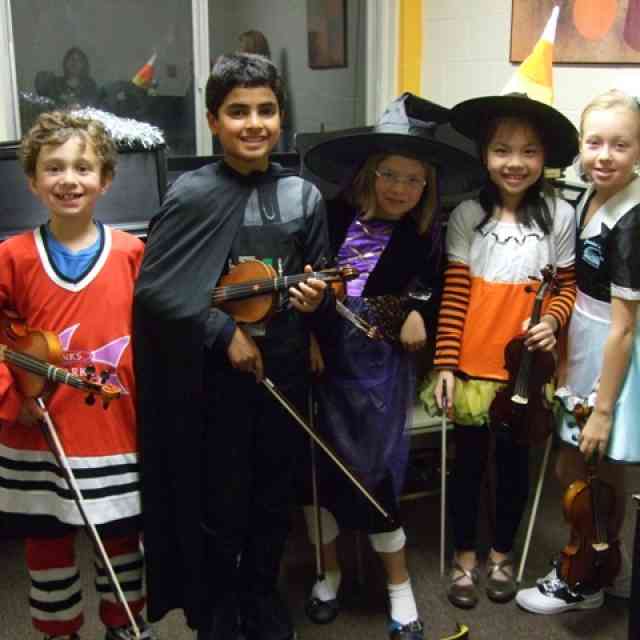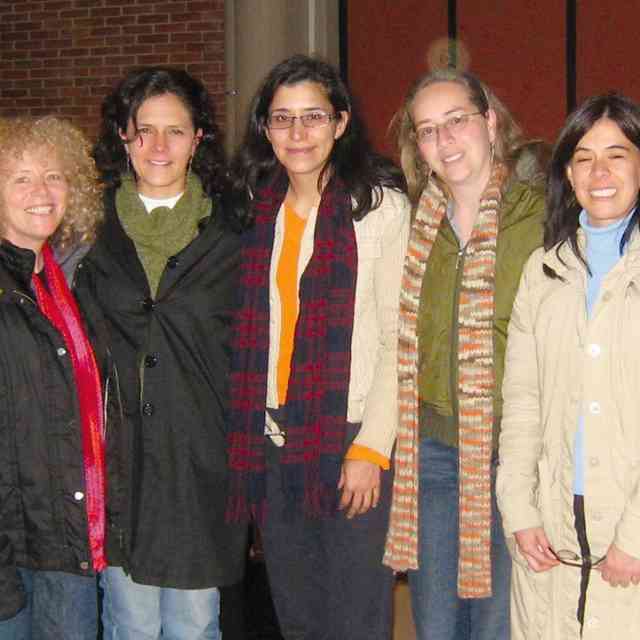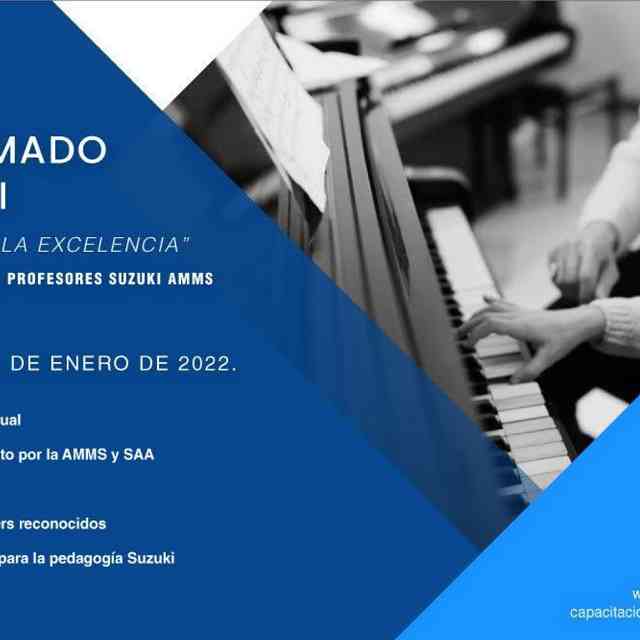With comments from Etna Diemecke and Fabiola Sigala
We recently had the wonderful opportunity to be part of an SAA Practicum Unit™ in Piano, given by Caroline Fraser at the Instituto Suzuki Vive la Música in Mexico City. This amazing workshop has brought us to appreciate the art of teaching even more.
This art involves the instrument, the music, the student and the parent. When the instrument is tuned, when it is the right size or the bench is the right height, when the correct body balance has been taken care of, what remains is placing the music in the student’s hands. That’s when the art begins—when the teacher’s state of mind and energy come together, using the correct tools—which allows the student to develop the skills that will lead him to flow through the joyful experience of music making.
We have come to understand what Dr. Suzuki said about becoming a teacher when we reach one hundred years of age. We realize that, before that time comes, we are all students, constantly improving our playing skills and through experience, acquiring and sharpening our teaching tools and strategies. We’ve realized that teaching an instrument is a great responsibility, for it is important to transmit, motivate, and give an excellent example, to praise and to be specific about every teaching step.
We believe that the Practicum is essential for every teacher at any level; it is a vital step that every teacher should take. This workshop helps us evaluate how our teaching is evolving—it gives us a way to acquire new strategies and to share experiences, which will enhance our skills and sharpen our tools. The result will be that our students’ playing will improve.
The workshop begins by the teacher trainer handing out and explaining the descriptors that will serve as a base for the observations of the trainees’ teaching, usually both an on-site lesson and a video recording. These descriptors contain different sections regarding the teacher’s approach towards the student, such as being at eye level, the use of language appropriate to the student’s age, excellent playing examples, comprehensive corrections focused on one point to be improved, making sure that homework instructions are clear to the parents. Other descriptors include making sure that the instruments are in perfect condition and well tuned and that the teaching area is clean, airy, and with good light, which also serves as an example of the studying conditions that should be replicated in the home practice.
The way to proceed is as follows: Trainees share their thoughts based on their observation of the lesson that has just been taught, following the descriptors only and mentioning the positive aspects of the teaching. No negative comments are allowed. Then, feedback from the trainer follows. That is where she points out the most important aspects that were present at the lesson and then the ones that can be improved, followed by a demonstration of how this improvement can be achieved, having the trainee go to the instrument and experience it “hands on,” making sure that the teaching skill has been acquired. To end the feedback process, a strategy for the following lesson with that student is planned with the trainer’s input. Through these steps, the teaching tools are immediately applied the following day or two days later, when we get to teach the same student again. In this way, the new tools and strategies are internalized and become part of our teaching skills.
We all learned from every lesson and from every comment because one becomes more aware of one’s own teaching abilities while watching other teachers at work, in exactly the same way as children learn from observing other children’s lessons. We learned from every teacher’s strategies, because everyone contributed something from their own teaching experience.
The results of this workshop are immediately evident. The Practicum workshop has made our teaching more enjoyable and our students have immediately benefited from our enhanced teaching abilities. We’ve created a trusting group where we can share ideas, points of view, problems, or difficulties with the other teachers, because, as we said, we all benefit from other teachers’ strategies and comments, sharing and not competing. This fantastic workshop was complemented by individual lessons for the teachers in which we became again actual students, looking to be more aware of our playing examples.
We wish to thank the SAA for its support in helping us bring Caroline to our institute and for promoting these kinds of workshops that are so helpful for our development as teachers. The trainees, Etna Diemecke, Fabiola Sigala, Greta Licona and myself, as well as the students who participated and their parents, wish to thank Caroline for sharing her valuable teachings through her vivid examples of the Suzuki philosophy, which are transmitted with love and true care.
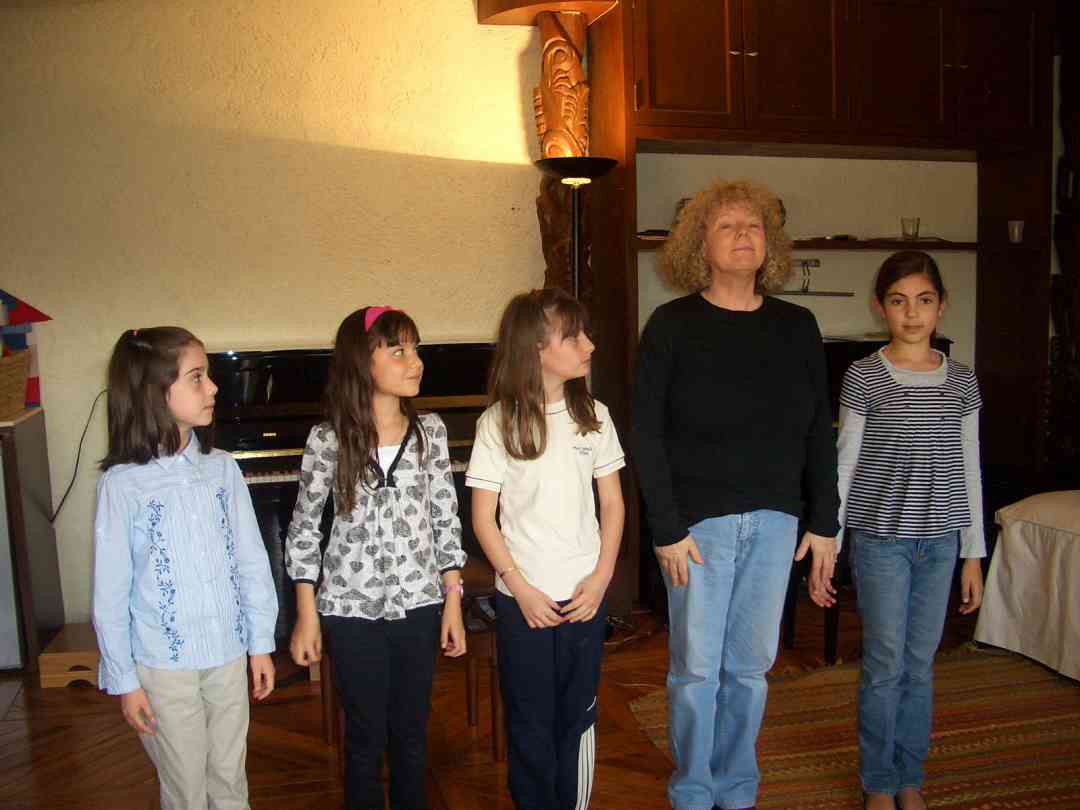
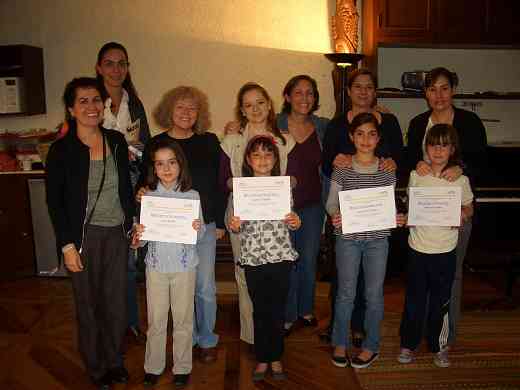
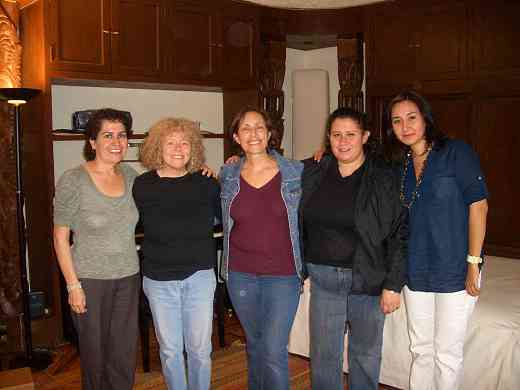
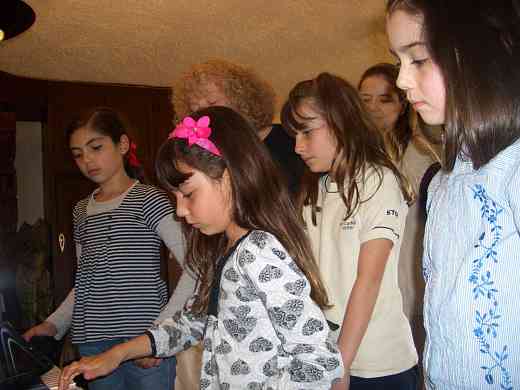
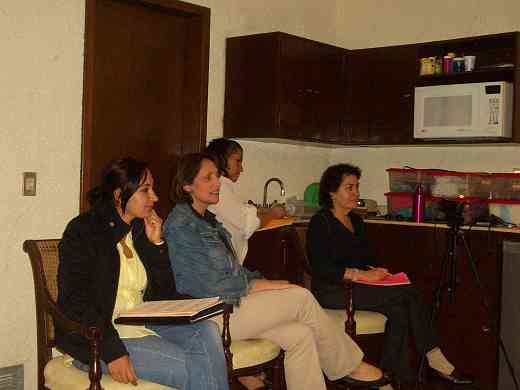
Practicum
Un gran medio para afilar tus herramientas de enseñanza.
Con comentarios de Etna Diemecke y Fabiola Sigala
Este extraordinario taller nos ha llevado a apreciar aún más el arte de enseñar.
Este arte involucra el instrumento, la música, el alumno y los padres de familia; cuando el instrumento está bien afinado o la altura del banco es la adecuada, cuando el cuerpo está en equilibrio, lo que resta es poner la música en las manos del alumno…y ahí es cuando comienza el arte…cuando la mente y la energía del profesor se unen, utilizando las herramientas correctas, que ayuden a llevar al alumno al desarrollo de las habilidades que le permitirán experimentar el placer de hacer música…
Hemos comprendido lo que el Dr. Suzuki decía con respecto a convertirse en maestro al cumplir los cien años de edad, ya que nos damos cuenta que, hasta que ese momento llegue, todos somos alumnos que vamos mejorando nuestra manera de tocar y que, a través de la experiencia, vamos adquiriendo y afilando nuestras herramientas y estrategias de enseñanza…
Recientemente tuvimos la oportunidad de participar en el taller de practicum para piano, impartido por la Mtra. Caroline Fraser, que se llevó a cabo en el “Instituto Suzuki Vive la Música” en la Ciudad de México.
Estamos de acuerdo en que el enseñar a tocar un instrumento musical, conlleva una gran responsabilidad, ya que es importante el transmitir, motivar, dar el mejor ejemplo, encomiar y ser específico sobre cada punto de la enseñanza.
Creemos que este taller es esencial para cada maestro y en cada libro. Es un paso imprescindible que creemos cada maestro debe dar; este nos ayuda a evaluar como va evolucionando nuestra manera de enseñar.
El taller comienza cuando la profesora entrenadora hace entrega de unas hojas que contienen los “descriptores” y explica su funcionamiento; mismos que servirán de base para las observaciones que se le hará a cada maestro en las clases que este impartirá, en vivo o bien en video, con una duración de 30min, en cualquier caso.
Estos descriptores están divididos en diferentes secciones según la manera en que el maestro se acerca al alumno, tales como: tener contacto visual, el uso del lenguaje apropiado a la edad del alumno, el dar excelentes ejemplos interpretativos, correcciones que sean comprensibles y que se enfoquen en un solo punto a mejorar, asegurarse que las instrucciones para la tarea les quedan claras a los padres de familia; y otros descriptores que tienen que ver con: asegurarse de que los instrumentos estén en perfectas condiciones y bien afinados, que el área de trabajo esté limpia, bien aireado y con buena iluminación, ya que esto sirve también como ejemplo de las condiciones que deben ser replicadas en la práctica en casa.
El procedimiento es el siguiente: los maestros en entrenamiento comparten sus observaciones acerca de la clase que acaban de presenciar, basándose únicamente en comentar cuáles de los descriptores estuvieron presentes. Sólo se permiten comentarios positivos.
Después sigue la retroalimentación dada por el profesor entrenador, en donde recalca los puntos más importantes que estuvieron presentes en la clase que se acaba de observar, así como los puntos en que se puede mejorar, seguidos por una demostración de cómo se pueden lograr estas mejoras, invitando al maestro a ir al instrumento y experimentar ahí mismo las nuevas herramientas o estrategias, asegurándose de que se ha adquirido la nueva habilidad de enseñanza.
Para finalizar el proceso de la retroalimentación, se prepara una estrategia y plan de trabajo con los comentarios y sugerencias del profesor entrenador, para que el maestro lo pueda poner en práctica en la siguiente clase con ese mismo alumno.
Siguiendo estos pasos, las herramientas de enseñanza son utilizadas de inmediato, ya sea al día siguiente o dos días después cuando regrese ese mismo alumno para recibir otra clase. De esta manera, las herramientas y estrategias de enseñanza se interiorizan y se convierten en parte de nuestras habilidades de enseñanza.
Todas aprendimos de cada clase, de cada comentario, ya que uno se vuelve más conciente de su manera de enseñar cuando uno observa a otros enseñando, precisamente de la misma manera en que los alumnos aprenden al observar las clases de otros alumnos.
Aprendemos de las estrategias que utilizan otros maestros, ya que cada quien aporta algo de su propia experiencia.
Los resultados de este taller se ven de inmediato. El taller de practicum ha hecho que disfrutemos más el enseñar y nuestros alumnos se han visto beneficiados de inmediato con nuestro aprendizaje recién adquirido.
Hemos creado un grupo de confianza en donde compartimos con las otras maestras nuestras ideas, puntos de vista, problemas o dificultades, porque, como ya dijimos, todos nos beneficiamos con los cometarios y estrategias de los demás maestros. Compartiendo y no compitiendo.
Este maravilloso taller se complementó con clases individuales para las maestras, en donde nos convertimos nuevamente en verdaderos estudiantes, con miras a estar más concientes de los ejemplos interpretativos que damos.
Queremos agradecer a la SAA por su apoyo para traer a Caroline a nuestro instituto y por promover este tipo de talleres que son de gran ayuda para nuestro desarrollo como maestros.
Las maestras quienes tomamos este entrenamiento: Etna Diemecke, Fabiola Sigala, Greta Licona y una servidora, así como los alumnos y sus padres, deseamos agradecer a Caroline Fraser por compartir su valiosa enseñanza, a través de sus vivos ejemplos de la Filosofía Suzuki, los cuales nos han sido transmitidos con amor y con verdadero interés.

